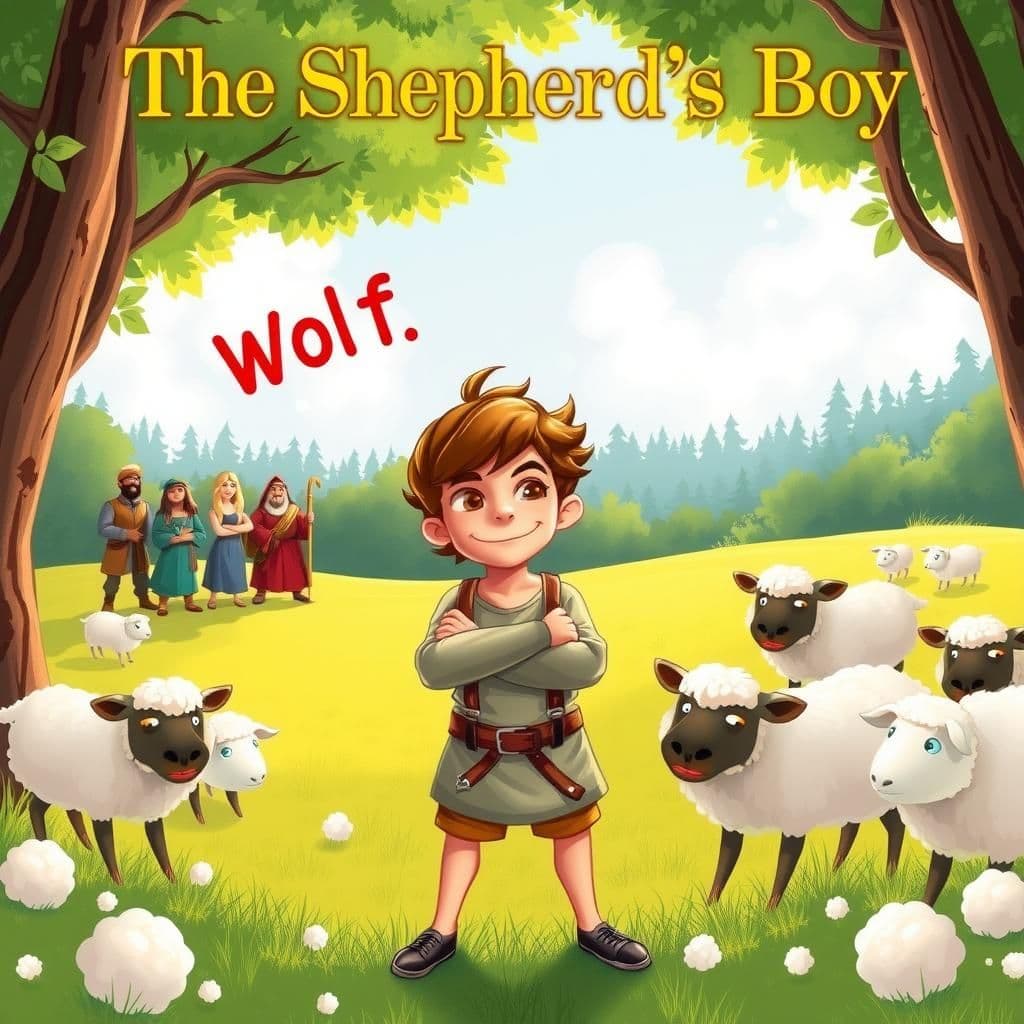The Shepherd's Boy

Story Summary
In this fable story with moral, a lonely young Shepherd Boy tricks the villagers twice by falsely shouting "Wolf" to gain their attention. When a real Wolf appears and threatens his sheep, the villagers ignore his cries, believing he is lying again, leading to a loss of his flock. This unique moral story teaches young readers that a liar will not be believed, even when telling the truth, emphasizing the importance of honesty in real-life stories with moral lessons.
Click to reveal the moral of the story
The moral of the story is that dishonesty can lead to a loss of trust, making it difficult to be believed when one is finally telling the truth.
Historical Context
This story is a variant of the ancient fable "The Boy Who Cried Wolf," attributed to Aesop, a Greek storyteller from the 6th century BCE. It reflects cultural themes of trust, the consequences of deceit, and the importance of honesty, which are common in fables and folklore across various cultures, emphasizing moral lessons that resonate through generations. The tale has been retold in numerous adaptations and remains a staple in discussions about integrity and accountability in both literature and education.
Our Editors Opinion
This fable reminds us of the importance of honesty in building trust, a vital currency in modern relationships and communities. For instance, in a workplace setting, if an employee frequently exaggerates problems or misrepresents their workload, when a real crisis arises, their colleagues may dismiss their concerns, leading to dire consequences for the team’s success.
You May Also Like

The Fox and the Bramble
In "The Fox and the Bramble," a fox climbs a hedge but falls and grabs a bramble for support, only to be pricked and hurt. Accusing the bramble of being more harmful than the hedge, he learns that he should have expected pain from something that also causes it to others. This wisdom-packed moral story illustrates how selfish individuals often encounter selfishness in others, a common theme in well-known moral stories.

The Hen and the Swallow
In "The Hen and the Swallow," a hen nurtures viper eggs, oblivious to the danger they pose, which serves as a timeless moral story highlighting the folly of nurturing harmful beings. The swallow warns her of the impending threat, illustrating a simple lesson from stories about the consequences of ignorance. This fable joins the ranks of popular moral stories, emphasizing the importance of discernment in our choices.

The Tortoise and the Birds
In "The Tortoise and the Birds," a simple short story with moral undertones, a Tortoise enlists an Eagle to carry him to a new home, promising a reward. However, when a Crow suggests the Tortoise would make a good meal, the Eagle, swayed by the idea, drops him on a rock, leading to his demise. This engaging moral tale serves as a cautionary reminder against trusting enemies for assistance, a common theme in famous moral stories and animal stories with moral lessons.
Other names for this story
The Boy Who Cried Wolf, The Lonely Shepherd, A Lesson in Trust, The Deceptive Shepherd, When Lies Backfire, The Shepherd's Warning, The Wolf Among Us, Trust Lost in Lies
Did You Know?
The story of the boy who cried wolf highlights the theme of trust and the consequences of dishonesty, illustrating how repeated deceit can lead to the loss of credibility, even in dire situations where one is telling the truth. This cautionary tale serves as a timeless reminder of the importance of integrity and the potential repercussions of misleading others.
Subscribe to Daily Stories
Get a new moral story in your inbox every day.